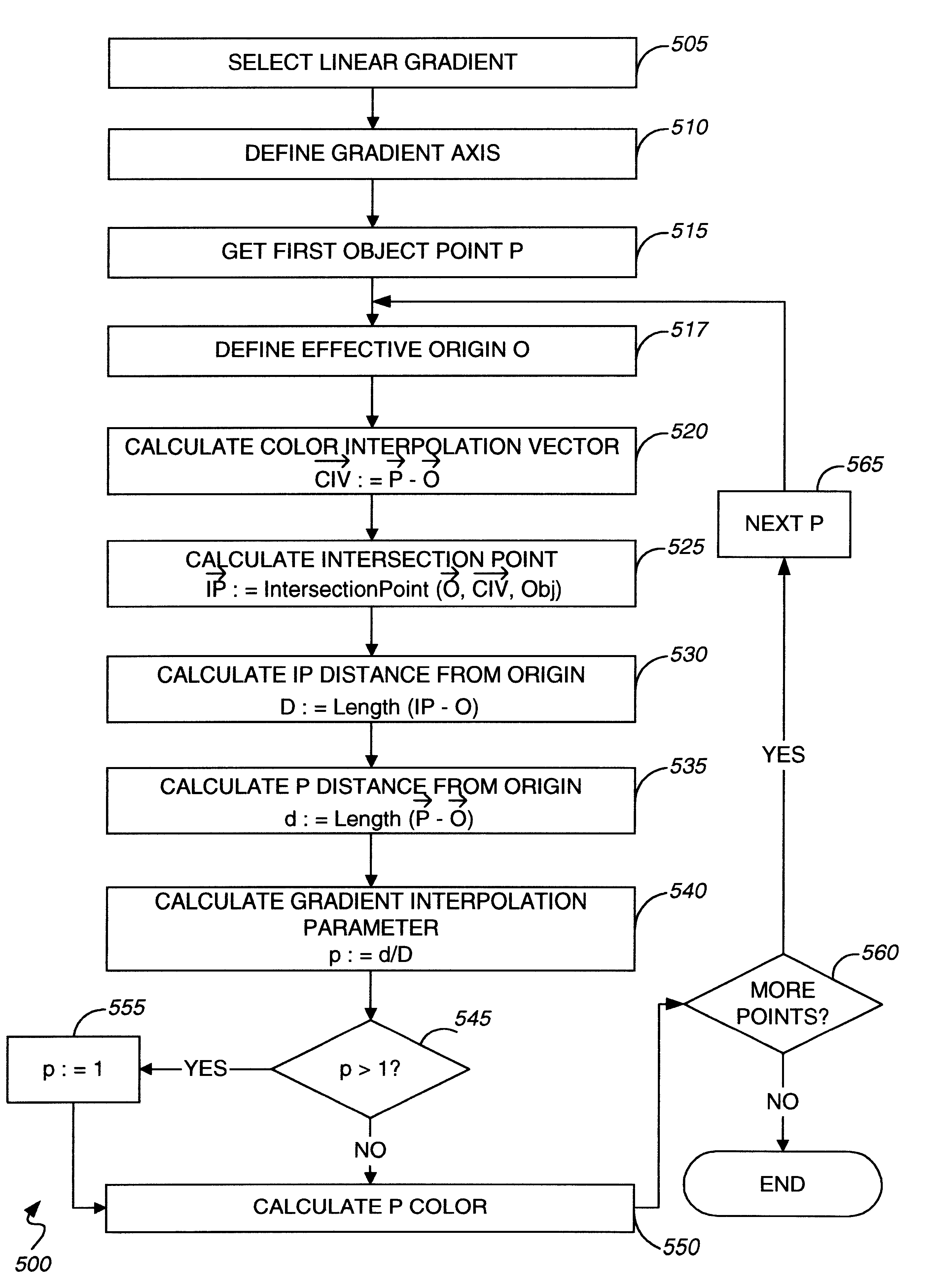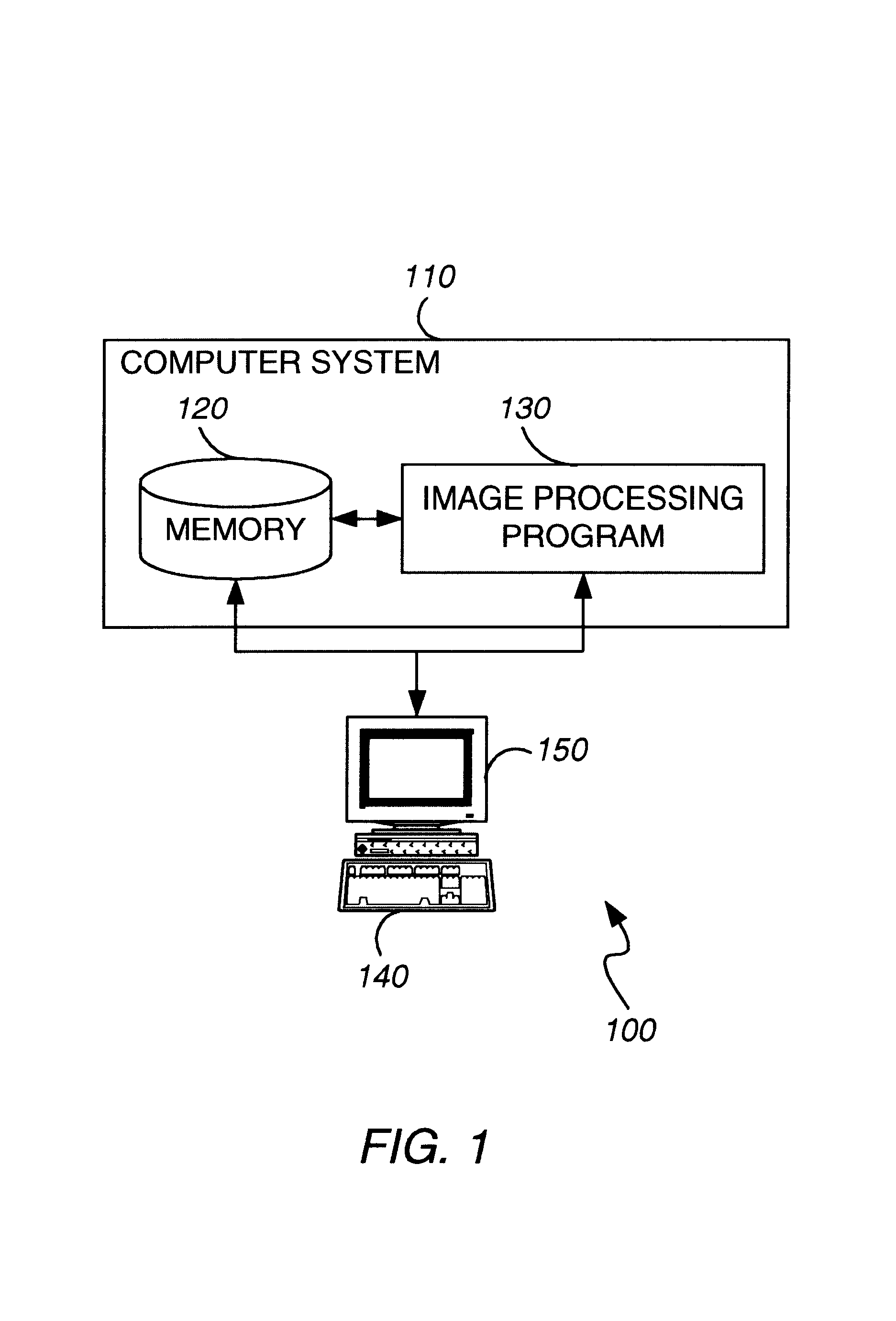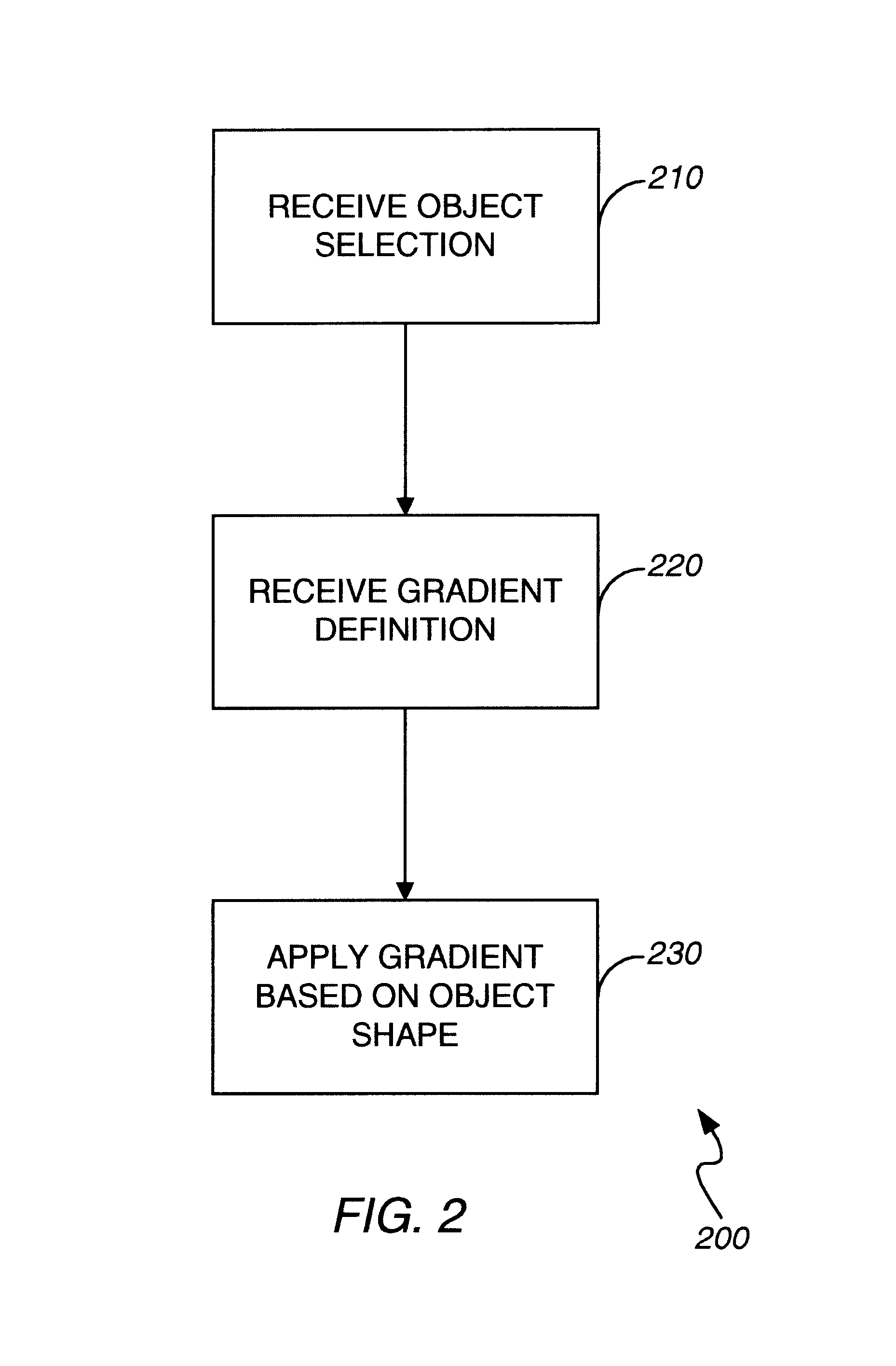Methods apparatus for generating shaped gradient fills
a gradient filling and gradient technology, applied in the field of image processing techniques, can solve the problem of not providing a means
- Summary
- Abstract
- Description
- Claims
- Application Information
AI Technical Summary
Benefits of technology
Problems solved by technology
Method used
Image
Examples
Embodiment Construction
od of applying a linear shape gradient.
[0017]FIG. 6 depicts a number of objects filled using a linear shape gradient.
[0018]FIG. 7 illustrates a number of objects filled using a radial shape gradient.
[0019]FIG. 8 illustrates a number of objects filled using conventional and shaped radial gradients.
[0020]Like reference symbols in the various drawings indicate like elements.
DETAILED DESCRIPTION
[0021]FIG. 1 illustrates an image processing system 100 that includes a general-purpose programmable digital computer system 110 of conventional construction, including a memory 120 and a processor for running an image processing program 130. Image processing system 100 also includes input devices 140, such as a keyboard, mouse or digitizing pen, and output devices such as a display monitor 150. Optionally, image processing system 100 also includes conventional communications hardware and software by which computer system 110 can be connected to other computer systems, such as over a network.
[002...
PUM
 Login to View More
Login to View More Abstract
Description
Claims
Application Information
 Login to View More
Login to View More - R&D
- Intellectual Property
- Life Sciences
- Materials
- Tech Scout
- Unparalleled Data Quality
- Higher Quality Content
- 60% Fewer Hallucinations
Browse by: Latest US Patents, China's latest patents, Technical Efficacy Thesaurus, Application Domain, Technology Topic, Popular Technical Reports.
© 2025 PatSnap. All rights reserved.Legal|Privacy policy|Modern Slavery Act Transparency Statement|Sitemap|About US| Contact US: help@patsnap.com



